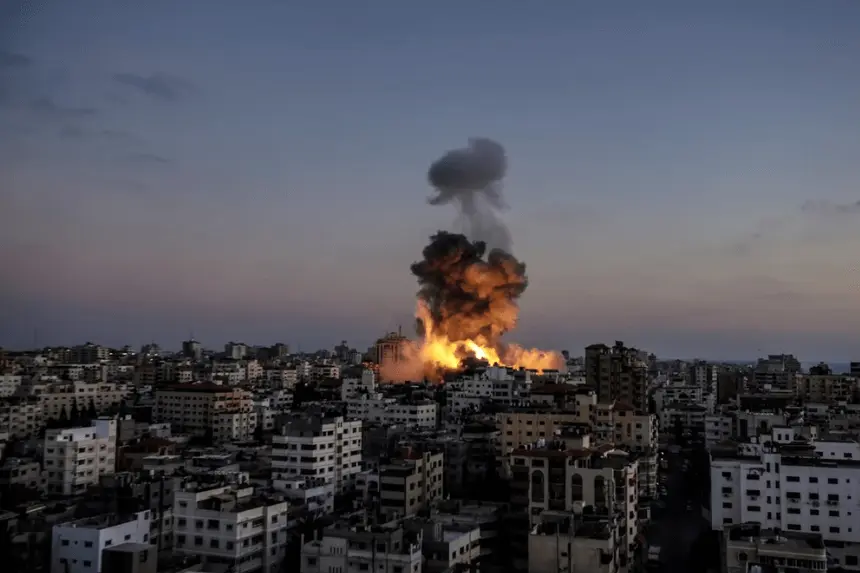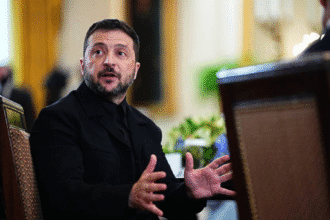The current ceasefire negotiations in Gaza have reached a critical stage, where significant progress has been made, but there are still adverse issues of concern. An expression of optimism has also been demonstrated by U.S. President Donald Trump and Israeli Prime Minister Benjamin Netanyahu, who indicated that a breakthrough in the negotiations could be achieved. Nevertheless, other problems like humanitarian aid, Palestinian relocation, and control of the territory are still among the major obstacles. Notwithstanding these challenges, the two leaders have taken steps to ensure that a solution is reached to the 21-month-old conflict. These talks are closely watched by the international community, which hopes that they will lead to a ceasefire that can lead to permanent peace in the region.
- Where are Gaza Ceasefire negotiations at?
- What are the Major Problems in Ceasefire Negotiations?
- Can Netanyahu and Trump Come to an Agreement about Relocating Palestinians?
- Can there be Peace in Gaza between Trump and Netanyahu?
- What are the Consequences of a Ceasefire?
- Could the Gaza Ceasefire be a Reality?
Where are Gaza Ceasefire negotiations at?
At a combined assembly at the white house, President Trump added that the process of talks on a ceasefire in Gaza has been going on fine. I think negotiations are progressing very positively, Trump told reporters, who seemed confident that Hamas is keen on ending the 21-month conflict. His words sisignaled awilight turn into optimism of the still indirect negotiations.
The statements of Trump are following several rounds of ceasefire negotiations between Israel and Hamas in Doha, Qatar, which remained at a dead point. At the same time, the negotiations went on, and both heads were asked about the possible obstacles, but Trump was sure and said, I do not think there is a hold up. Here is the link to our article on the Gaza and West Bank Genocide
What are the Major Problems in Ceasefire Negotiations?
Nonetheless, there are major obstacles in spite of the good rhetoric. The main problem is viewed around the scene of humanitarian aid and activities of the Gaza Humanitarian Foundation. Hamas has demanded the shutdown of the Foundation’s business, whereas Israel has not been ready to discuss this problem, which they claim has no mandate over it.
An attempt at a ceasefire had been proposed by the U.S., which would see Hamas relinquish 10 living hostages and the remains of 18 deceased hostages in five phases during a 60-day ceasefire. Israel would also be supposed to free some of the Palestinian captives and offshoot some of the Gaza. Strip
Nonetheless, this ceasefire plan is highly opposed by both parties since they are trying to strike a balance between territorial and humanitarian interests. The requirement given by Hamas to stop the aid continues to represent the key obstructive topic, and that has not been concentrated on the satisfaction of Israel.
Can Netanyahu and Trump Come to an Agreement about Relocating Palestinians?
One of the main points within the meeting was accomplished regarding the possibilities of moving Palestinians. Trump declared that neighboring countries were collaborating to seek solutions for Palestinians who may want to move out of Gaza, whereas Israeli Prime Minister Netanyahu revealed that he was also searching for the possibilities to offer a better future to those who still stay in Gaza.
Nevertheless, the Palestinian Authority has strongly opposed the idea of relocation, stating that it is a breach of international law. The long-term intentions of Israel were also questioned through the words made by Netanyahu, who said that he wanted to restrict the statehood of Palestine. As Netanyahu clarified, Israel will never give up control of Gaza security; hence the chances of realizing an independent Palestinian nation are not imminent. Here is the link to our article on Netanyahu Ceasefire Tensions
Can there be Peace in Gaza between Trump and Netanyahu?
The dilemma is whether there may be a long-term solution to the dispute in Gaza with Trump getting diplomatic assistance from the Netanyahu government. During the meeting, Daneyahu proposed that Trump receive the Nobel Peace Prize, due to his achievements in other peace-seeking activities in the region. Trump has been unequivocal on the matter and says, we will strike a deal this week.
Both of the leaders are operating under a lot of pressure, not only pressure on the international level, but on the domestic level as well. The growing number of protests against the policies of Netanyahu and the increasing scrutiny of the world community of the military actions of Israel in Gaza are parts of a toxic brew that is all set to spill out onto the global arena.
What are the Consequences of a Ceasefire?
In case the U.S.-supported ceasefire initiative is successful, it would be a major milestone in resolving the Gaza crisis. Nevertheless, many important questions like the fate of Palestinian refugees and the position of Gaza as well as humanitarian assistance have not been answered. The international community and the United Nations especially, have been calling upon more inclusive peace talks in order to handle the situation.
The civilian death and destruction are inhuman, and most analysts warn that any prolonged cease-fire will merely postpone greater divisions that will occur in the region unless the root cause is handled.
Could the Gaza Ceasefire be a Reality?
Although American President Donald Trump and Israeli Prime Minister Benjamin Netanyahu have shown good intentions toward reaching a lasting ceasefire in Gaza, the path is strewn with many challenges. As ceasefire talks have been taking place, many barriers exist, not excluding the terms of aid delivery, reproduction of Palestinian displacement, and other geopolitical barriers with potential consequences living to be seen.








